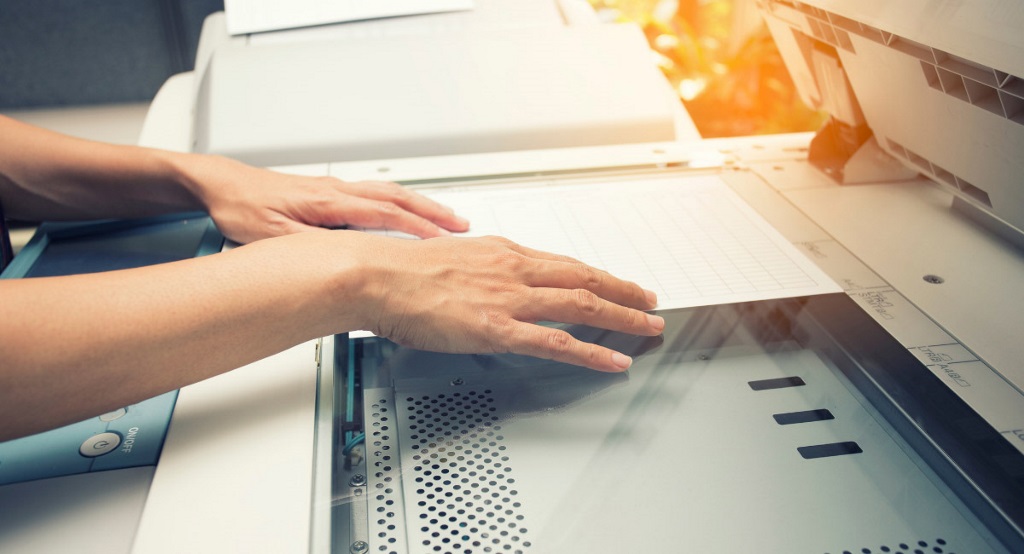
May 5, 2021
Printing over time can be expensive and with it comes additional worries for any type of company. On average, businesses spend between 1 and 3 percent of their annual revenue on printing expenses alone. Thankfully, once you calculate what you’re spending, your business can take control of its annual expenses in many ways.
According to Tech Donut, several factors contribute to the yearly expenses of printing. To approximate your company's typical printing costs, you first need to calculate the price per sheet.
In order to determine your company’s price per sheet, you first need to divide average cartridge prices by the number of pages the cartridges should cover. Keep in mind that these can vary, especially considering the different prices between color, black, toner and ink. Additionally, manufacturers usually base their estimates on 5% of each page being covered in toner or liquid ink; in reality, full pages of text are usually closer to 10% toner or ink. This means that the price per print could be double what manufacturers claim.
Formula to calculate the price of toner or ink per page
x / y = z
price of cartridge / number of pages the cartridge covers according to the manufacturer = price of toner or ink per page
Additionally, your printing cost calculator needs to factor in the price of paper. According to Tufts University and Stand.earth (formerly known as ForestEthics), the average American office worker uses one sheet of paper every twelve minutes, or forty sheets of paper every eight-hour working day. To figure out the average cost per employee annually, you need to divide the cost of a ream of paper by how many sheets it contains and then multiply that number by forty and by how many days a year that employee is in the office. As you can see, the annual average cost of paper can really add up.
Formula to calculate the average cost of paper per employee annually
(x / y) * (40 * z) = a
(cost of a ream of paper / number of sheets it contains) * (40 * number of days the employee is in the office) = yearly average employee cost of paper
Finally, there are more hidden business expenses outside of the costs of paper and cartridges. These miscellaneous expenses, which are primarily related to the lifetime cost of a printer and its upkeep, include but are not limited to:
It can be tedious to gather this information, but it's essential to make sure you are paying the best price for your printing needs.
Thankfully, there are many ways to reduce your printing expenses while increasing single-user productivity, keeping your files safe and making your entire company more efficient.
Although your mileage can vary, it's recommended that you replace your printer every five years. Upgrading your printer, or even just your printing software, has many benefits, including a boost in productivity time and a reduction in additional costs (such as maintenance and higher color cartridge prices).
Probably the most important part of upgrading your printing equipment or software is increased security. Innovative software such as PaperCut prioritizes security, protecting your documents before, during and after printing. You can see how your current printing environment’s security stacks up by downloading our free checklist. Be sure to read about the steps you can take to secure your printer throughout its life cycle.
The cost of printing isn't just monetary--it's bad for the environment, too. Many Fortune 500 companies, including Nike, Bank of America and AT&T, are in the process of reducing their paper consumption by adopting lower-use campaigns. These campaigns have helped them maximize time and resources while reducing their carbon footprints.
Even if your company isn’t ready to transition to a fully paperless format, you can still cut back on your paper expenses. Consider reducing your paper consumption by establishing a double-sided print standard in the office. You can also keep certain documents digital while only printing out what is really needed. Storing your records digitally not only cuts down on paper and office expenses, but it reduces downtime productivity costs.
According to BizTech Magazine, managed print services reduce current print expenses while also setting up your company for savings far into the future. By investing in a managed print service, you’re helping ensure the long-term financial health of your business. Managed print services such as the innovative PaperCut are designed to fit in with your existing print environment.
Managed print services can be customized to fit a wide range of needs. They ultimately strive to help your company:
Keeping track of your company’s paper costs might seem unnecessary, but it can help you make the most of your budget. By implementing these tools, you’ll not only get the most bang for your buck, but you’ll be helping the environment, too. For more information on how you can make your company machine run green, check out our post 10 Earth-Friendly Tips to Improve Office Efficiency & Sustainability.